2013.01.01
Futenma dominated Okinawa’s news in 2012
By Bill Charles

The future of MCAS Futenma, plans to move Marines elsewhere from there, and opposition to the deployment of Osprey MV-22 tilt-rotor aircraft there dominated much of Okinawa’s news all throughout the year.
The word Futenma reverberates across Okinawa, and then across the Pacific and even to the United States this year as everybody wants to do something with the controversial – and to many, despised — Marine Corps Air Station in Ginowan City, but nobody has quite the clout to make anything happen.
From relocating the base to northern Okinawa to moving Marines from Okinawa to other spots in the Pacific to lessen the impact of Futenma on the prefecture’s base-hosting burden, to bringing the much-maligned MV-22 Osprey to the base, everyone has something to say about Futenma. The air base hasn’t just been in the news once or twice this year, but rather, it has been a long-running saga with more tangential angles than any other newsmaker of the year.
In January, U.S. Defense Secretary Leon Panetta “welcomed the news” the environmental impact report on Henoko had been referred to the governor. That excitement was quickly dashed when Governor Hirokazu Nakaima flatly rejected it, and called on America to move the base off his island. His hand was strengthened somewhat by the U.S. Congress freezing funds for the Futenma move in conjunction with moving Marines to Guam.

Flying high! The Golden Kings won the bj-League Championship last season and enjoyed 15 straight wins this season.
The consistent element of the Futenma story could best be summed up in ‘protest’. Demonstrations were frequent, and often noisy even when the numbers were small, as anti-base protesters reacted to promises that thousands of Marines were going to be transferred elsewhere. In late January, word began leaking that 4,700 Marines would depart the island to Guam, with no conditions or strings attached. Another 4,000 Marines were being considered for movement to Australia, the Philippines and Hawaii. As the year proceeded, progress on those plans was painfully slow, or non-existent.
At the same time, everyone from U.S. Senators to the senior Air Force general in the Pacific were
speaking out on where to move Futenma to get the relocation project re-energized. Senators Carl Levin, James Webb and John McCain were adamant the plan for relocating Futenma to the Henoko district of Nago City in northern Okinawa was flawed, and should be scrubbed. The senators’ thinking was that Futenma could – and should — be merged with Air Force units at Kadena Air Base. General Gary North, the Commander of Pacific Air Forces, didn’t like that idea at all. He dismissed two proposals for consolidating the two services’ operations, and the notion seemingly died another quiet death.
The announcement that the MV-22 Osprey hybrid aircraft would be coming to Okinawa in the fall brought out protesters and demonstrators in new numbers. Opposition was barely the term for their distress; anger over the deployment of a tilt-rotor helicopter-airplane that had been involved in several accidents and was, in their eyes, unsafe had them going at high speed. They mounted a good many protests across the summer and fall, with one they’d hoped would garner 100,000 participants. That didn’t happen because of a typhoon, but all-in-all, protesters have logged many hours in front of the Futenma main gate.
Protests did not deter the Marine Corps. The squadron of 12 Osprey aircraft were shipped into Japan to Iwakuni Marine Corps Air Station, where they went through testing, and a couple periods of being grounded while discussions on safety continued, and then it happened. The Ospreys were sent to Okinawa in late September. Despite ongoing protests, the Ospreys are flying from Futenma.
For sheer ongoing drama, nothing could quite match that, but the political circus on the national level gave it a royal try, claiming the number two spot in the news cycle. Prime Minister Yoshihiko Noda tried his best to hang onto his job, making little promises that he’d step down if he got his way, but in the end, he caved and called new elections. Disaster for his party, to say the least, as the Democratic Party of Japan took the wrath of the voters in mid-December, losing total control of the Lower House. The DPJ only picked up a quarter of the seats in the Lower House, scoring only 57 while the Liberal Democratic Party and partner New Komeito picked up 325.
The only minor victory for Prime Minister Noda was nudging passage of his sales tax hike in June. The win came with help from the LDP, even as his own party disapproved of the bill, which increases the sales tax from 5% to 8% in 2014, and then to 10% in 2015.
Commemoration of the 40th Anniversary of Okinawa’s Reversion to Japan was the third largest story of the year, with all eyes on the prefecture on May 15th. More than 1,200 dignitaries participated in a day of ceremonies at the Okinawa Convention Center. The ceremonies acknowledging Okinawa’s independence from U.S. control after 27 years was overshadowed by the discussions of Marines and politics.
Moving the U.S. Marines off Okinawa was the fourth of the year’s big stories, and it, too, had many tentacles. First, the March announcements that the Marines’ Air-Ground Task Force was being diversified as part of the American forces realignment in Japan, sending Marines from Okinawa to Australia and Guam, for starters. Then came word that the U.S. had forgotten to tell Japan about its plans for realignment, irritating Foreign Minister Koichiro Genba.
In May it got a bit more interesting with a formal declaration by Japan and the U.S. that 9,000 Marines would be leaving, and that five U.S. military installations would be handed back to Japanese control. The announcement also noted that Henoko would continue to be the Futenma relocation site. Everyone got excited over the plan to hand back Camp Foster’s West Futenma Housing area known in Japanese as Zukeran, and parts of Camp Kinser, also referred to as Makiminato. Details of the other turn-back sites were left unclear.
Number five on the power list of stories in Okinawa was the strength of the professional basketball Ryukyu Golden Kings, who captured a second Basketball Japan League title in three years, dumping the Hamamatsu Higashimikawa Phoenix 89-73 to cap a 39-13 season.
The Senkaku Islands located in southwestern Okinawa Prefecture added all the excitement needed to notch the sixth most important story of the year, and another that’s continuing to run. The pretty much peaceful five uninhabited islets controlled by Japan and administered by Ishigaki City came out of obscurity when Tokyo’s outspoken governor, Shintaro Ishihara, launched a project to purchase the privately owned islets. He raised over ¥200 million, only to see the national government step in and buy the islands.
That’s when things began to heat up, as China fired back that the small islands actually were part of its sovereign territory. Words turned to Chinese vessels sailing near or into Japanese waters, Japan Coast Guard exchanging water cannon duels with Chinese ships, and even Chinese surveillance aircraft overflying the Senkaku Islands to aid in staking its claim. The story’s not over as Chinese ships continue to trespass into Japanese waters, and diplomatic protests continue.
Setbacks for Okinawa Governor Hirokazu Nakaima and his Liberal Democratic Party in Prefectural Assembly elections in June accounted for the seventh top story of the year. His party lost control as the LDP and two partnering parties couldn’t pull enough votes to keep the Social Democratic Party and the Japanese Communist Party out of power. Voter turnout was at a record low as Nakaima was given the message people aren’t happy with the way he’s handled the economy.
A string of incidents by unruly American GI’s ultimately triggered a curfew and a variety of restrictions, including an end to off-base drinking, to take the eighth position in the Top Ten. It all began with the indecent assault and fondling of a young woman in August, progressed to an early morning rape in Okinawa City by two visiting sailors from Texas that led to an 11 p.m. ~ 5 a.m. curfew, and then a couple of breaking & entering, misconduct and curfew violations, plus a driving while intoxicated Marine staff NCO resulting in injuries, to push military brass to slap some hefty restrictions on virtually every serviceman in Japan, including a ban on off-base drinking.
Typhoonsgot enough votes to score the number nine position for 2012, not because any one

The year’s typhoons did not cause much damage but will be remembered for their frequency – three in a row.
typhoon inflicted so much damage, but because collectively they messed up so many municipalities, not to mention forcing postponements and cancellations of festivals, sales, parties and sports events. ‘The names Jelawat that ran amuck for ten straight days, Prapiroon, Samba and Bolavan won’t be quickly forgotten by anyone on Okinawa. In particular, the three-in-a-row Bolavan-Samba-Jelawat over three consecutive weeks kept everyone on their toes.
Number ten story of the year was a race. Kouta Nakama made headlines in February, knocking off the competition at the Okinawa Marathon to capture a second title. More than just winning, he outdid himself by more than two minutes over his 2011 run time. A total of 11,211 started the grueling 26-mile marathon, with 79.8%, 8,918, hanging on to finish the course.
-
James
-
James
-
James
-
Tomamii
-
sniffnob

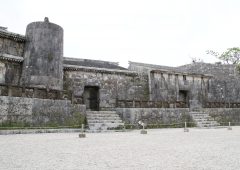 2024.07.07
2024.07.07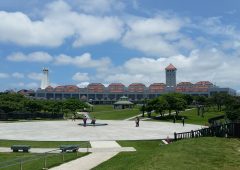 2024.06.21
2024.06.21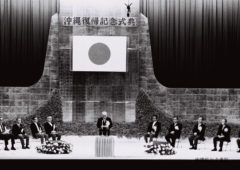 2024.05.15
2024.05.15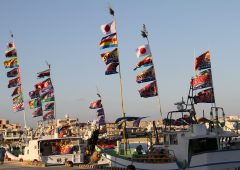 2024.02.07
2024.02.07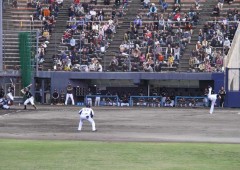 2024.01.31
2024.01.31 2023.11.02
2023.11.02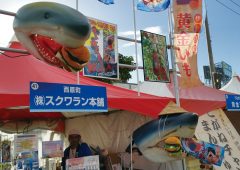 2023.10.26
2023.10.26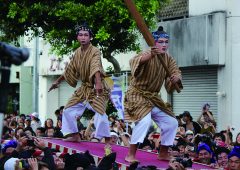 2023.09.29
2023.09.29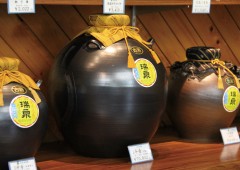 2023.09.01
2023.09.01






